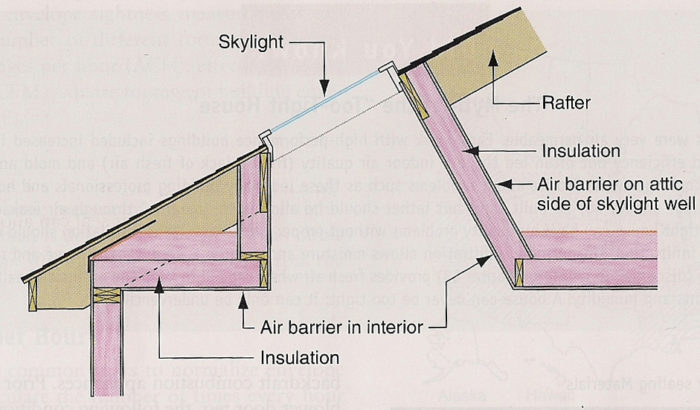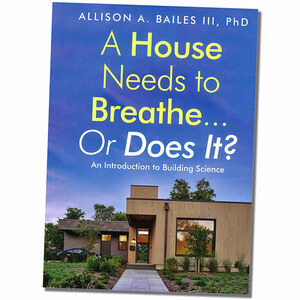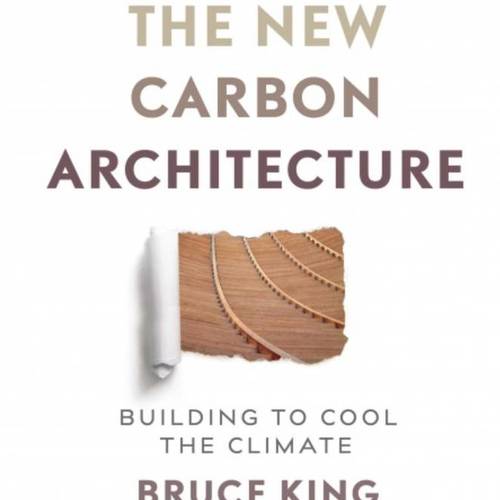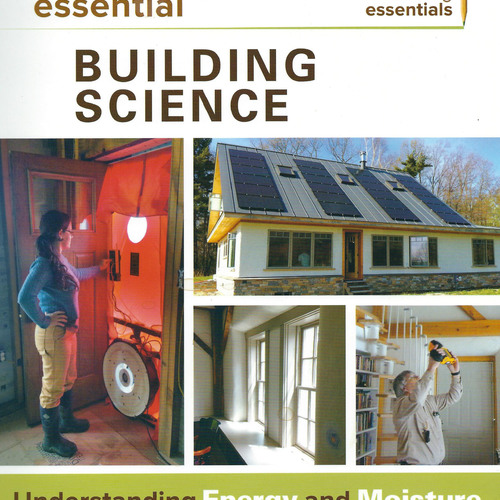
Carl Seville, this website’s resident green building curmudgeon and blogger, has teamed up with Abe Kruger, an energy rater and BPI Building Analyst, to write a new textbook, Green Building: Principles and Practices in Residential Construction.
The book fills a gap, and fills it well. Until now, there hasn’t been a good, comprehensive introduction to green residential construction that was suitable for use in classrooms. Anyone who’s been waiting for a solid reference book on the topic of green residential construction should go out and buy this book.
This 521-page hardback includes soup-to-nuts coverage of the following topics:
- Defining green building
- The house as a system
- Planning a house
- Insulation and air sealing
- Foundations, floors, walls, roofs, and attics
- Windows
- Exterior finish materials
- Patios and decks
- Landscaping
- Interior finishes
- HVAC equipment
- Electrical systems
- Plumbing
- Water heaters
- Renewable energy systems
Every page of the book includes at least one clear illustration or photograph. The well-chosen illustrations and photos will certainly facilitate comprehension for any student of green building — especially “visual learners” who are more likely to grasp concepts displayed in pictures than concepts explained in words.
Since Carl is a member of the GBA team, the information he presents is consistent with the advice found on the GBA website. The authors’ perspective is firmly based in building science, and the book is free of any taint of greenwashing.
Here are samples of the wisdom found in Green Building:
Weekly Newsletter
Get building science and energy efficiency advice, plus special offers, in your inbox.

This article is only available to GBA Prime Members
Sign up for a free trial and get instant access to this article as well as GBA’s complete library of premium articles and construction details.
Start Free TrialAlready a member? Log in















6 Comments
In defense of the arborist consultation
Martin - I think you may be a little too quick to criticize my friends on suggesting to call an arborist. I would assume they are not advising to have every fast growing weed inspected as you suggested but to give some thought as to the number, size, type, location and most importantly, the age of the trees on the lot and proceed with caution. As the authors are from Atlanta, I would think the majority of green building in the area is infill housing. It is these areas where there are 100+ year old oak trees lining the streets that are in danger. I do not think enough builders think about these trees during construction. They drive heavy equipment over the roots, trench through the roots with footings and sewer lines. Most do not understand the harm they do to the trees since it takes the trees about four years to die after the roots are destroyed. The tree still has leaves at the end of construction so put some pine straw around it and everything is great - they are not around four years later when the homeowner has to cut down the one big nice tree in the yard. Even in parts of the country where they grow like weeds - there is no quick fix for a missing 150 year old willow oak.
Builders should have arborists on their team as much as they should have a plumber and a carpenter. If you have one that you use often like your other trade partners, most will not charge you for a site consult. We call our arborist out before beginning any job that has a large tree on the lot - he will suggest ideas to minimize the impact to the roots and in certain circumstances will recommend treatments to the tree before and/or after construction to help with root repair and growth. He will even provide us with free mulch to put over the roots if there is no other option but to drive over them. Spending a few hundred dollars up front is much cheaper than having to remove a large tree after a house is constructed, sometimes costing thousands of dollars (kind of like upgrading the HVAC on the front end to save money down the road)
I think it is great advice that more builders and remodelors should embrace - there is no need to discourage this practice. You appear much more professional to your customer when you surround yourself with other professionals. Day #1 on the job can be spent driving over roots or installing tree protection - which is more green?
Response to Danny Kelly
Danny,
Of course there are many job sites where it makes sense to consult an arborist, and you have provided examples of when such a consultation makes sense. I never said that arborists weren't useful professionals who can provide help on a green construction project.
However, I think the advice given in the book was overly broad and needed qualification. Consulting an arborist is sometimes required -- but often it's not.
quibble...
Martin, I'd like to quibble one of your quibbles! I think if can lights are installed, sealed and insulated properly are going to work just fine, and, more importantly, satisfy many of our customers and clients.
Looking forward to this book!
Response to Kent Mitchell
Kent,
Most so-called airtight can lights leak air. Most experienced home performance contractors who have conducted blower door tests for years can confirm this.
In addition to the fact that most recessed can lights leak air, they have at least two other problems: they create hot spots in insulated ceilings that can lead to snow melt and ice-damming (most commonly, when the can lights are installed in a cathedral ceiling, but also when installed in a flat ceiling, if the can light is near the eaves), and they reduce the thickness of the insulation by taking up space in the insulated framing bay.
Thanks for the review
Martin - Thanks for the thorough review of our book. I appreciate the time you obviously put into digesting the information. Although you did find some flaws, considering the depth and breadth of the subject and the time (3 years) we put into it, I feel like we didn't miss too much. I've been on a short vacation so I haven't taken the time to dig into your specific comments on errors and disagreements, but will do so with Abe and follow up soon.
On a couple of specific comments - I appreciate your concern that we didn't address the problem with recessed lights in insulated ceilings more strongly. We talk early in the book about the importance of the building envelope and where to locate it, but I see that the electrical chapter could use a recap of that issue as it relates to fixture selection.
On the HVAC, we did include a 2 page chart listing the pros and cons of different types of systems. we all have our preferences for what to use, but they are going to be influenced by climate, building type, occupant behavior and preferences, and available fuel sources. In a text like this, it is almost impossible to make specific recommendations that apply to all readers - we need to provide them with appropriate information for them to make their own decisions.
Finally, for today, I have to take responsibility for "fenestration management". We went back and forth with calling that chapter Windows, Doors, and Skylights, and ultimately chose to call it fenestration to be more accurate and cut down on the words used in each sentence. I think that particular section could use a better title but some things just slip through the cracks.
We're in the process of reviewing the text for the next printing and will be able to make some minor changes and corrections, big adjustments will need to wait for the next full edition in a few years.
Carl
Alternatives to can lights
When we built our house 17 years ago we put in two sets of large track lights with 4 lights each in the ceiling of our 2 story family room. We can turn on all 8 or only four on and they are on dimmers. They are directed toward the walls and give a nice light. With the dimmers we can go from romantic evening all the way to full light. I will be putting track lights in our new home. Much better than cans.
Log in or become a member to post a comment.
Sign up Log in